Apart from its turntable for vinyl records, the Austrian brand Pro-Ject is above all known for its smaller products, which are often dedicated to a single function, such as a phono pre-amplifier, a power amplifier, or a DAC.
However, at the Son & Image 2014 Festival in Paris, Pro-Ject presented an original series of new devices, including a turntable for vinyl records with a carbon arm, as well as a 'Box' containing a new DAC (soon to be tested by us in the Qobuz Hi-Fi Guide).
Thus, Pro-Ject?s new product MaiA (My Audio integrated Amplifier) is a complete change of pace. Its frame is small and flat, in contrast to the numerous different frames that the manufacturer usually uses.
This device, modestly named an integrated amplifier by Pro-Ject, contains in its small frame: an amplifier with the power of 2 x 30W/ 8?, a DAC with USB B input and three S/PDIF outputs, a Bluetooth aptX receptor, and a phono preamplifier (as the manufacture also specializes in turntables). The frame also provides a headphone socket for night time listening.
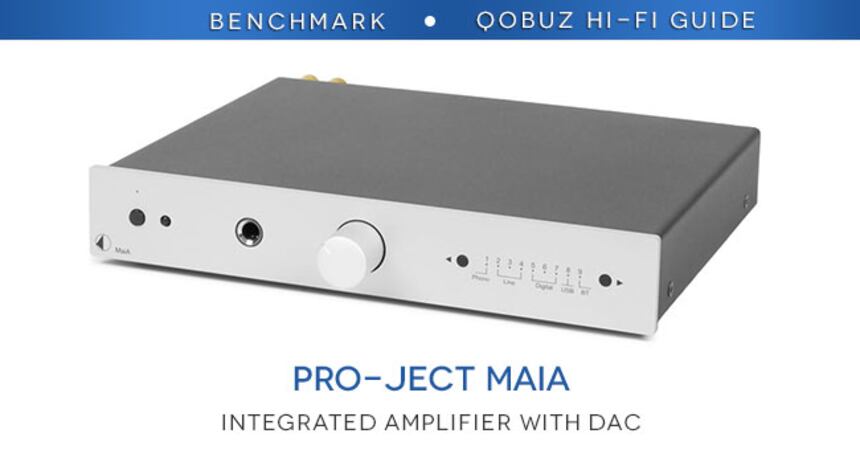
About the Pro-Ject MaiA
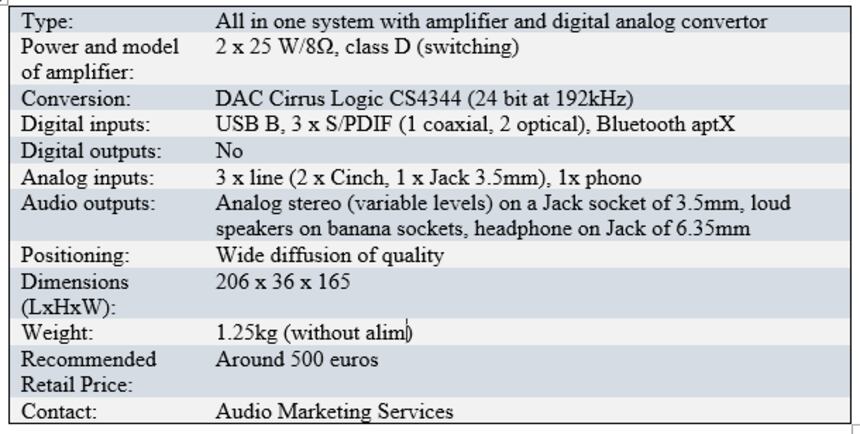
Presentation
The MaiA?s width is double that of Pro-Ject?s other devices of the S Line series. Its appearance is discrete and sophisticated. Made of natural or black anodised aluminium, the large yet slender case contains a discrete power button situated on the left hand side. It is overlooked by a blue LED light that flickers when the machine is turning on.
On the right side lies the remote control receptor, and then the headphone socket of a standard 6.35mm Jack. The motorised volume dial is in the middle of the front face. The right hand side is adorned with blue LED lights which indicate the selected input. These are underlined by a delicate screen printing and framed by two buttons of a sequential selection.

Connectivity
You could not fit a single additional input to the back face of the MaiA; it is already bursting with sockets.
Regarding its analogical features, there are three line inputs (two on Cinch sockets and one on a Jack socket of 3.5mm) and one phono input (as Pro-Ject sells turntables around the world, this entry was crucial). The line outputs can be attached to another amplifier or a subwoofer.

The sockets for the speakers are on the outside of the back face, next to the power socket. They accept stripped wires, like banana files. One must take care when connecting not to short-circuit the device, due to the small distance between these sockets.
There are numerous digital inputs: one USB B input to connect to a computer, three S/PDIF inputs (one coaxial and two optical), as well as the socket for the antennae for the Bluetooth aptX?s reception.
Manufacturing
The Mai A?s frame and cover are manufactured in folded steel sheets. This gives the device considerable weight, further accentuated by the abundance of electronics housed inside.
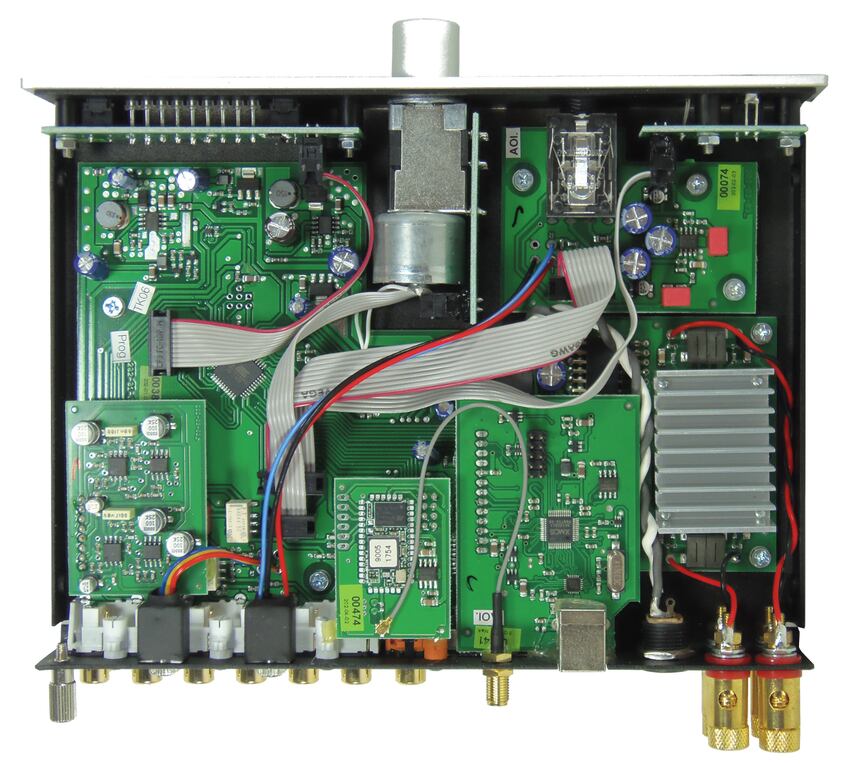
The main card occupies more than half the surface of the box and welcomes three daughter cards. These are, going from the left, the phono preamp (or RIAA), the Bluetooth aptX receptor and the USB interface.
The amplification switching card, which is hardly more noticeable than the heater, is inserted into a connector at the end of the main card.
The motorised potentiometer belongs to the brand Soundwell. On its left there are diverse controls for the power feed on the main board, whilst on its right there lies the card for the amplifier for headphones.
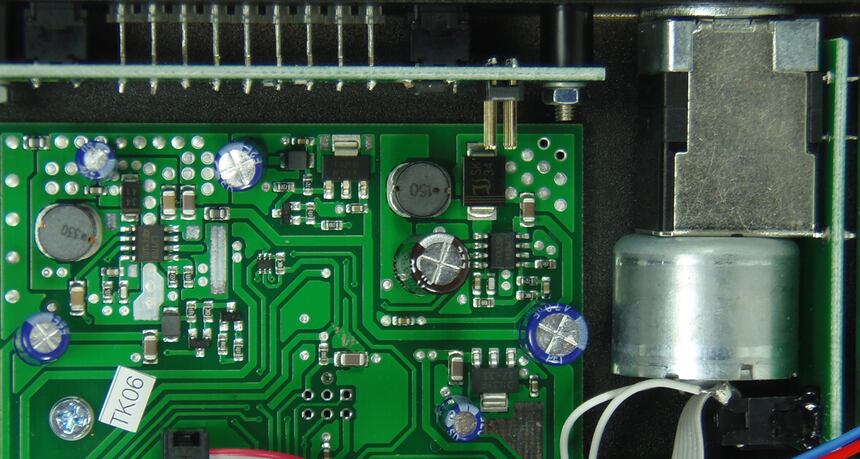
The amplifier for headphones, visible in the image underneath, is equipped with an integrated amplifier for Texas Instruments TPA6111A2 headphones, with MOS technology. The amplifier is able to deliver a maximum power of 150mW in 16?. This TPA61111A2, which can also be used as a stage preamplifier, is fed by the single voltage. There are also condensers of 470 µF, which block the continued tension used to reference a signal between the outputs and the headphone socket.
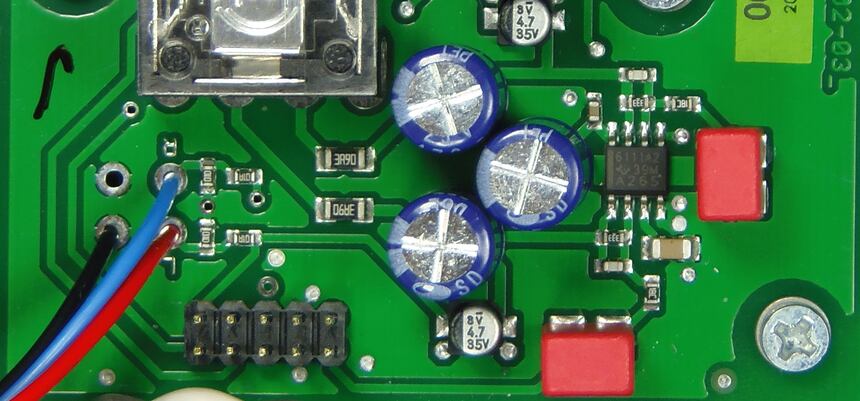
The S/PDIF inputs are interfaced by a Cirrus Logic CS8416 circuit, (24 bit at 192kHz, on the top left of the photo below) and the signals that originate either from this chip or from the USB card, are switched through a 74LVC157 circuit (at the top in the middle).
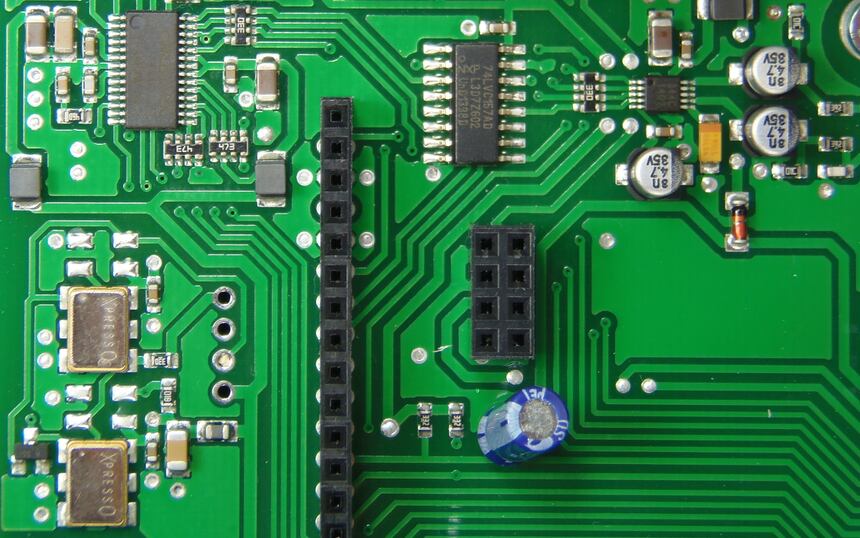
The Cirrus Logic CS4344 chip (24-bit/192kHz, at the top on the right), takes care of the analog digital conversion.
In this image one can also see the connector, on which the USB card is inserted. Next to this there are the two synchronisation quartz with the audio files at 44.1kHz and multiples, and 48kHz and multiples. In the middle there is the connector for the Bluetooth card.
On the USB card, a Microchip USB3318 (ex SMSC) chip ensures the interface with the computer in the asynchronous mode. The signals are then treated by the XMOS processor, to reconstruct the I2S which will be converted into audio signals by the CS4344.
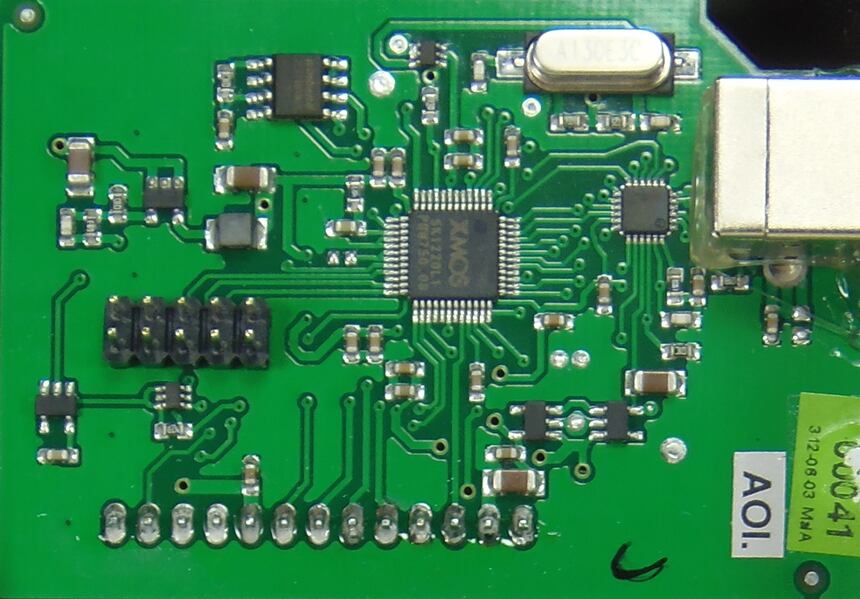
Underneath the Bluetooth card uses a CSR receiver module (Cambridge Silicon Radio, the holder of the aptX processor).
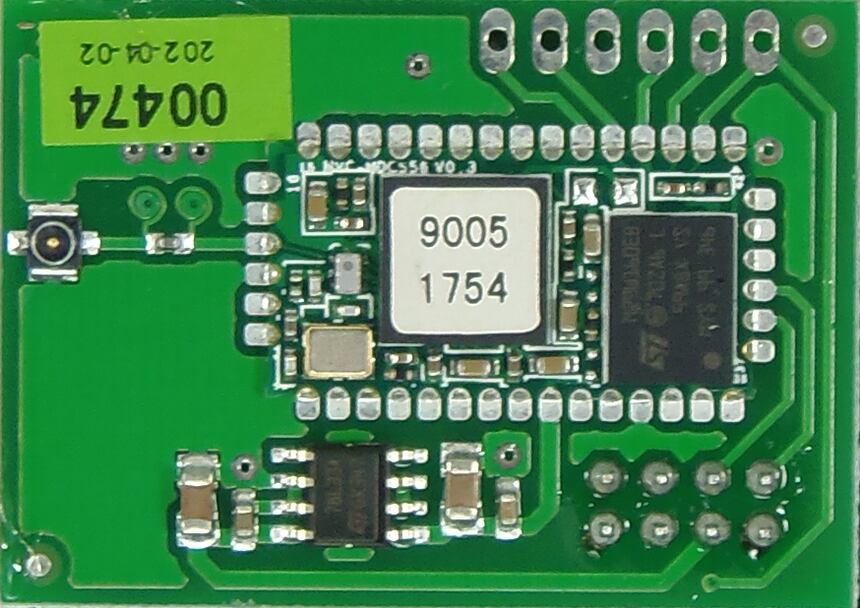
Usage, listening
It is necessary to install the driver from the CD provided when you connect the device to a computer.
For an aptX connection, the MaiA receptor is only activated when the Bluetooth input has been selected.
Pro-Ject provides guides detailing how to connect the device to an Android or Apple smartphone, but provides no guidance about how to connect to a PC.
You can connect the MaiA to PCs equipped with a Bluetooth Avantree DG40 dongle and the CSR Harmony software by using the following procedure that we discovered ourselves.
- Choose MaiA in the list of Bluetooth devices
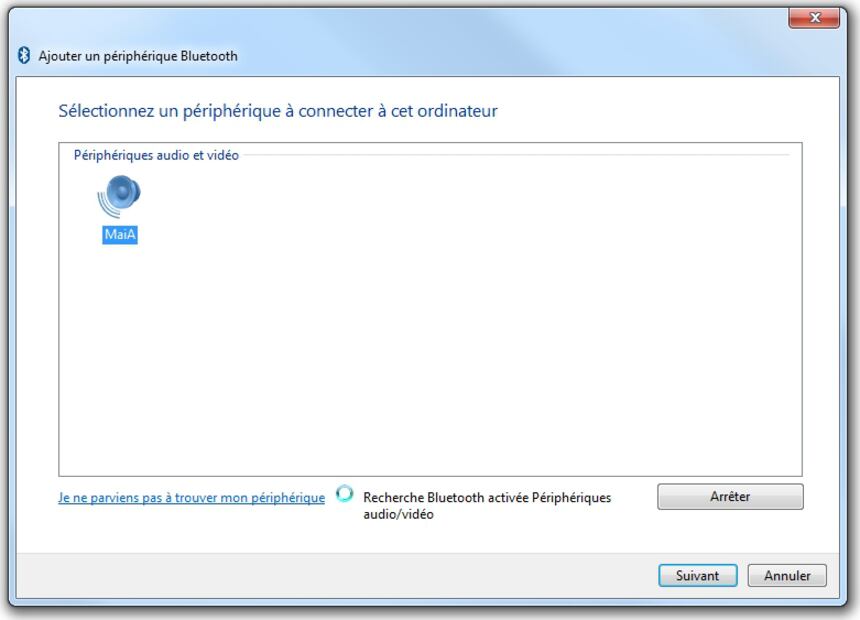
- When the window appears, briefly click on the power button on the MaiA
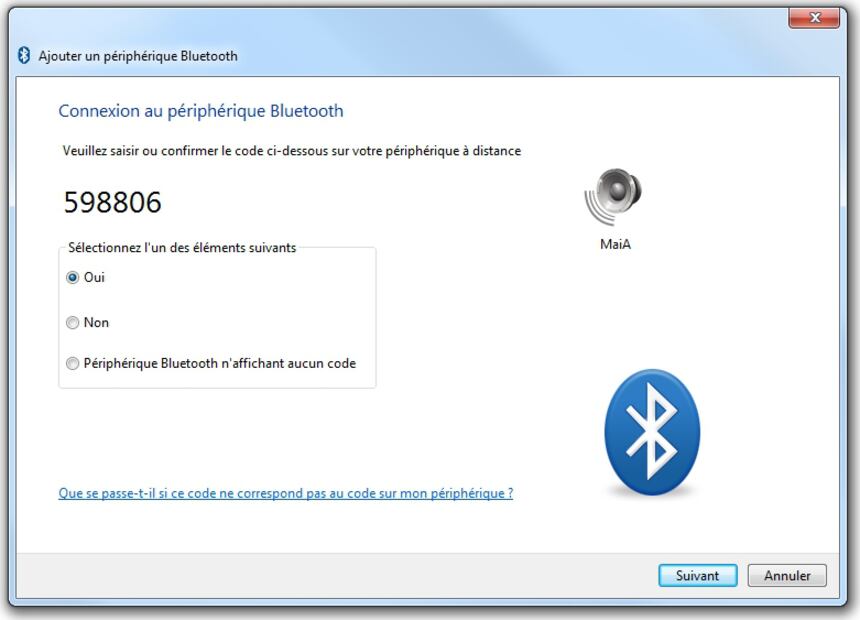
- The connection is established
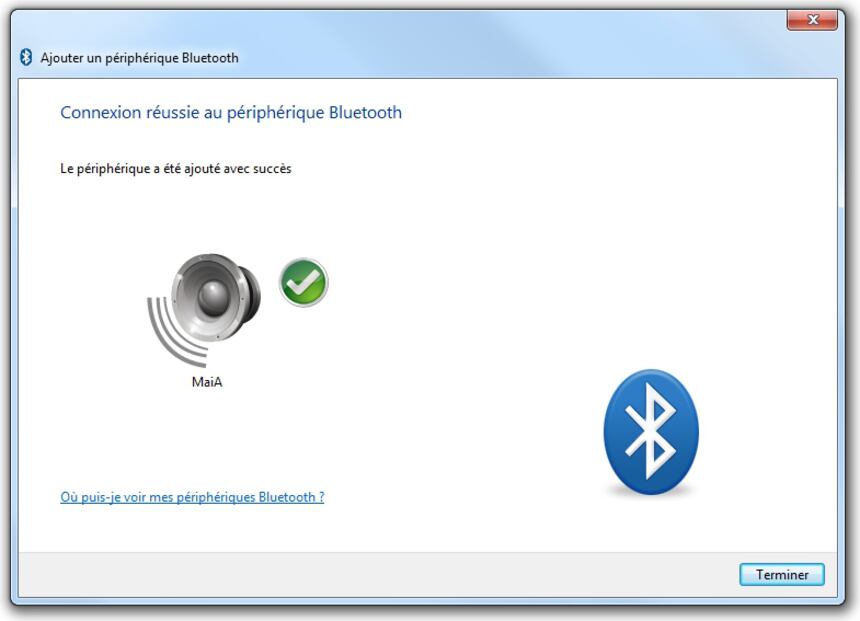
As it contains a relatively low power level, one should not ask too much of the MaiA. It nevertheless proves to be capable of reproducing such amazing works as the Ouverture de Peter Schmoll and even Preciosa by Weber, taken from the beautiful album recorded by Jean-Jacques Kantorow at the head of the Tapiola Sinfonietta. It reproduces these rich orchestral works with delicacy and precision; it is very delicate in the quieter sections and offers a very satisfying listening experience with these speakers with a performance of approximately 90dB/1W/1m.
The sound balance is also impressive, and one appreciates the distinguished sound of the early instruments played by the Tapiola Sinfonietta, whilst the percussion is clean and crisp. One also notes the beautiful airiness of the sound. Although the sound is less convincing and a little reserved when listened to using the headphone output, it does offer a generally pleasant sound reproduction. We listened to the album in Studio Masters Quality of 24 bit at 96kHz on the USB input.
We also used the USB input when listening to Dare (La La La) from the album Shakira by Shakira, where the sound pulses from the outset. It is not necessary to increase the potentiometer of the volume to hear a torrent of decibels, whilst the MaiA?s twenty five watts are vigorous without increasing the voice of the singer, playing the bass relatively loud.
When listened to in conjunction with aptX Bluetooth, our favourite of the moment, My Sweet Lord from the album Let It Roll by Georges Harrison enjoys a very convincing sound reproduction, where one fully appreciates the guitar chords, the accompaniment, the choristers and the ex-Beatles. One doesn?t notice any difference in the sound reproduction when using the USB input.
To evaluate the digital analog conversion we attached the preamplifier output to a Sony UDA-1 amplifier. The sound quality proved to be fantastic and one hundred percent capable of being treated by a more ambitious amplifier than that of the MaiA, although it does the job well.
In conclusion, the integrated Pro-Ject MaiA amplifier is a compact device offering an attractive collection of digital and analog inputs of an impressive performance. Its power, albeit limited, is none the less capable of obtaining great sound levels with a good fantastic, balanced and dynamic quality of sound. A commendable device at a very reasonable price.
Audio Marketing Services (importer)
Reading capabilities
Pro-Ject MaiA

If you are a manufacturer, importer, distributor or actor in the domain of sound reproduction and you wish to contact us, please do so using the following address: newstech@qobuz.com
If you are passionate about our Hi-Fi Guide and you wish to contact us, please do so using the following address: rubriquehifi@qobuz.com